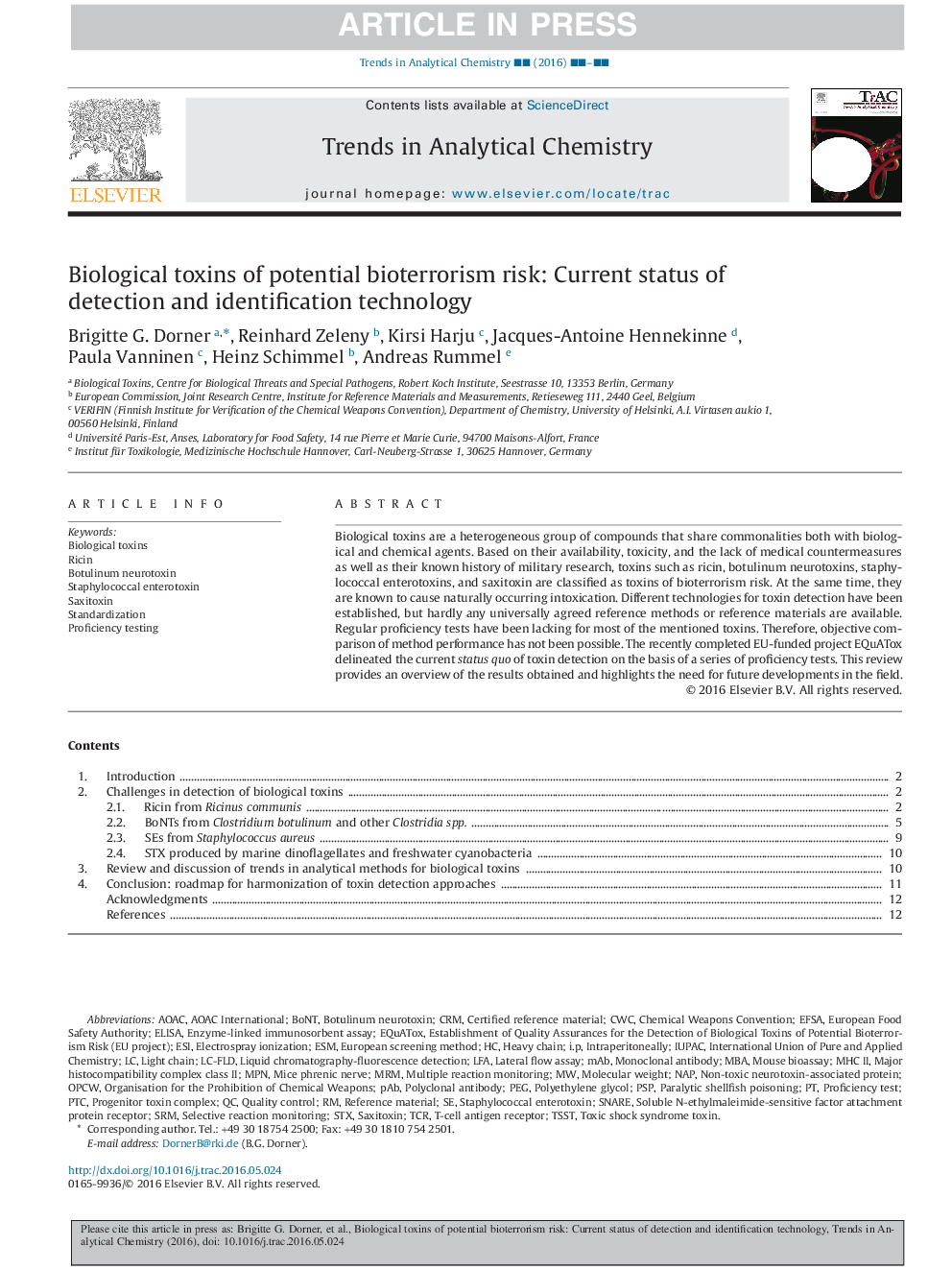| Article ID | Journal | Published Year | Pages | File Type |
|---|---|---|---|---|
| 5141790 | TrAC Trends in Analytical Chemistry | 2016 | 14 Pages |
Abstract
Biological toxins are a heterogeneous group of compounds that share commonalities both with biological and chemical agents. Based on their availability, toxicity, and the lack of medical countermeasures as well as their known history of military research, toxins such as ricin, botulinum neurotoxins, staphylococcal enterotoxins, and saxitoxin are classified as toxins of bioterrorism risk. At the same time, they are known to cause naturally occurring intoxication. Different technologies for toxin detection have been established, but hardly any universally agreed reference methods or reference materials are available. Regular proficiency tests have been lacking for most of the mentioned toxins. Therefore, objective comparison of method performance has not been possible. The recently completed EU-funded project EQuATox delineated the current status quo of toxin detection on the basis of a series of proficiency tests. This review provides an overview of the results obtained and highlights the need for future developments in the field.
Keywords
LC-FLDCWCEFSASNAREAOACMRMCRMi.pMPNPABBoNTTCrTSSTMBAMHC IIPSPESMIUPACSRMLFAESINAPSTXmAbOPCWPTCMouse BioassayLateral flow assayMonoclonal antibodyPolyclonal antibodyInternational Union of Pure and Applied ChemistryEuropean Food Safety AuthorityStandardizationStaphylococcal enterotoxinELISAEnzyme-linked immunosorbent assayProficiency testProficiency testingLiquid chromatography-fluorescence detectiontoxic shock syndrome toxinIntraperitoneallyRicinlight chainheavy chainSaxitoxincertified reference materialParalytic shellfish poisoningReference materialselective reaction monitoringmultiple reaction monitoringBotulinum neurotoxinMolecular weightpolyethylene glycolPEGMajor histocompatibility complex class IIquality controlChemical Weapons ConventionT-cell antigen receptorsoluble N-ethylmaleimide-sensitive factor attachment protein receptorelectrospray ionization
Related Topics
Physical Sciences and Engineering
Chemistry
Analytical Chemistry
Authors
Brigitte G. Dorner, Reinhard Zeleny, Kirsi Harju, Jacques-Antoine Hennekinne, Paula Vanninen, Heinz Schimmel, Andreas Rummel,
